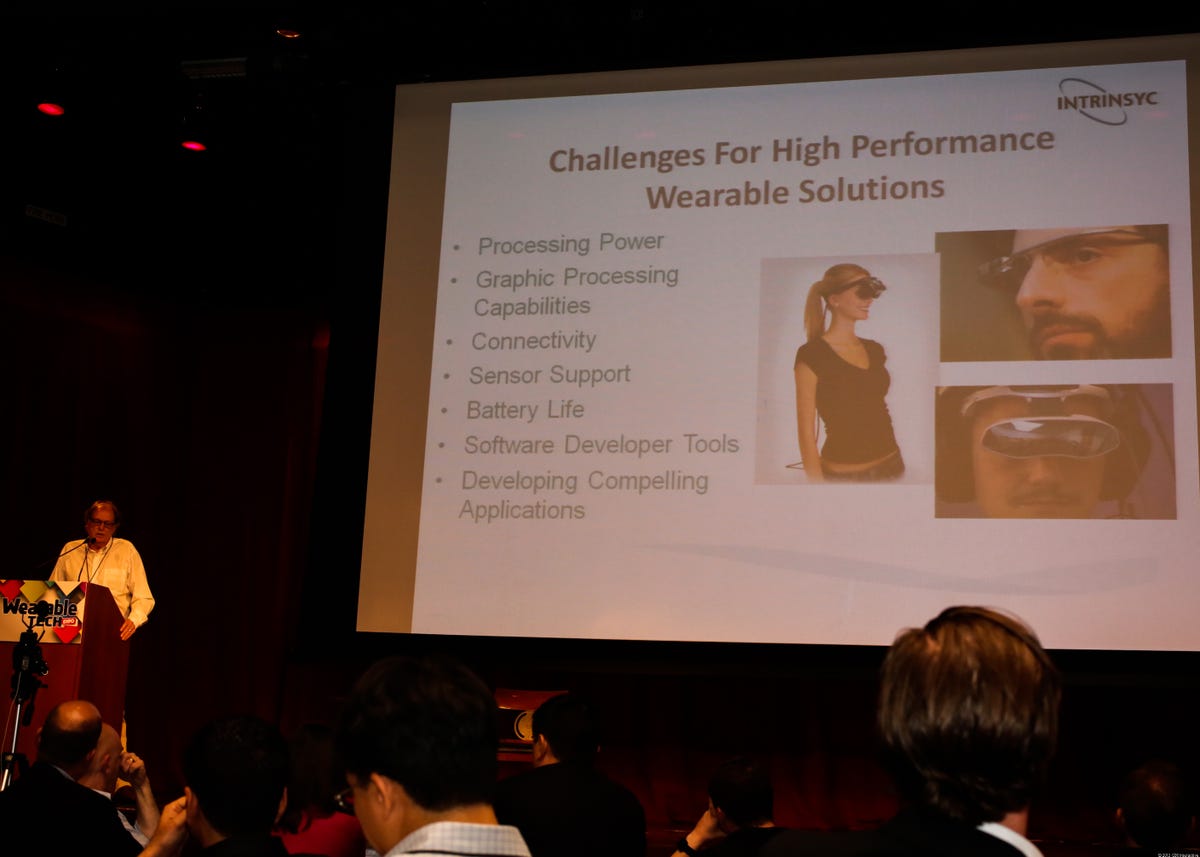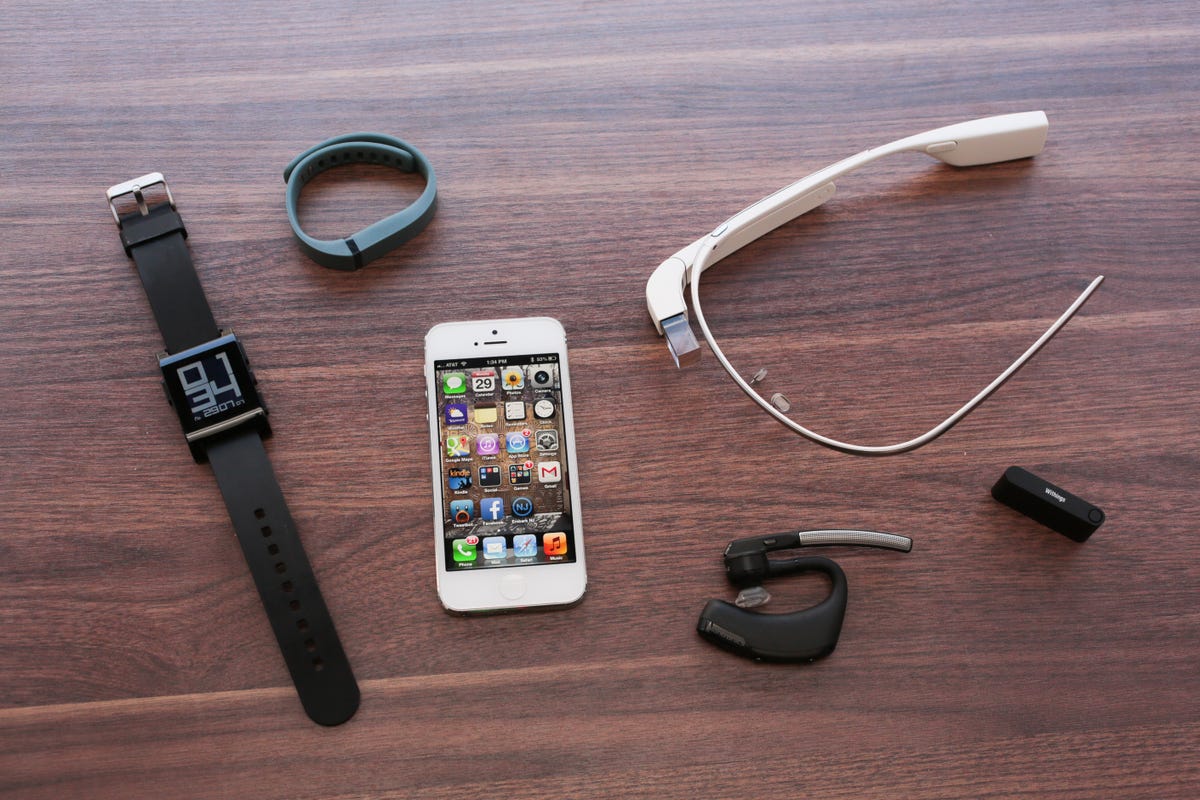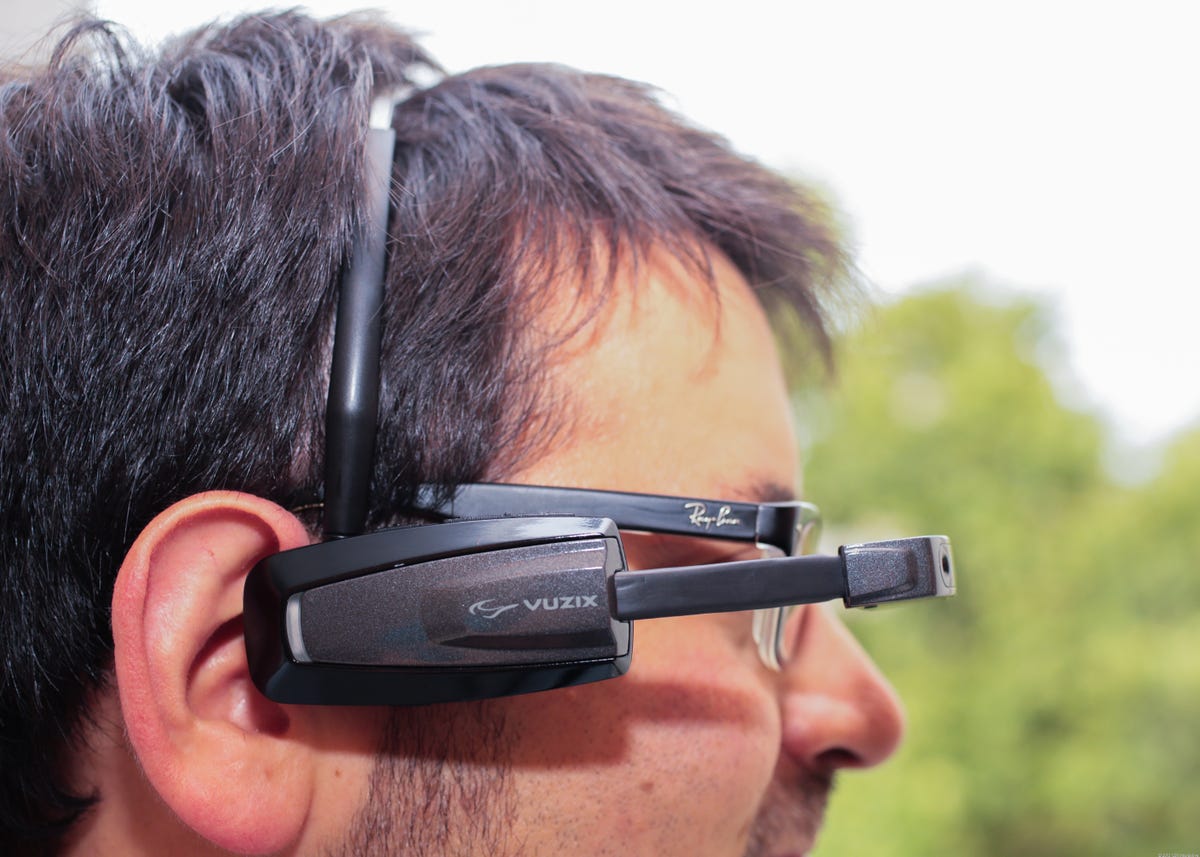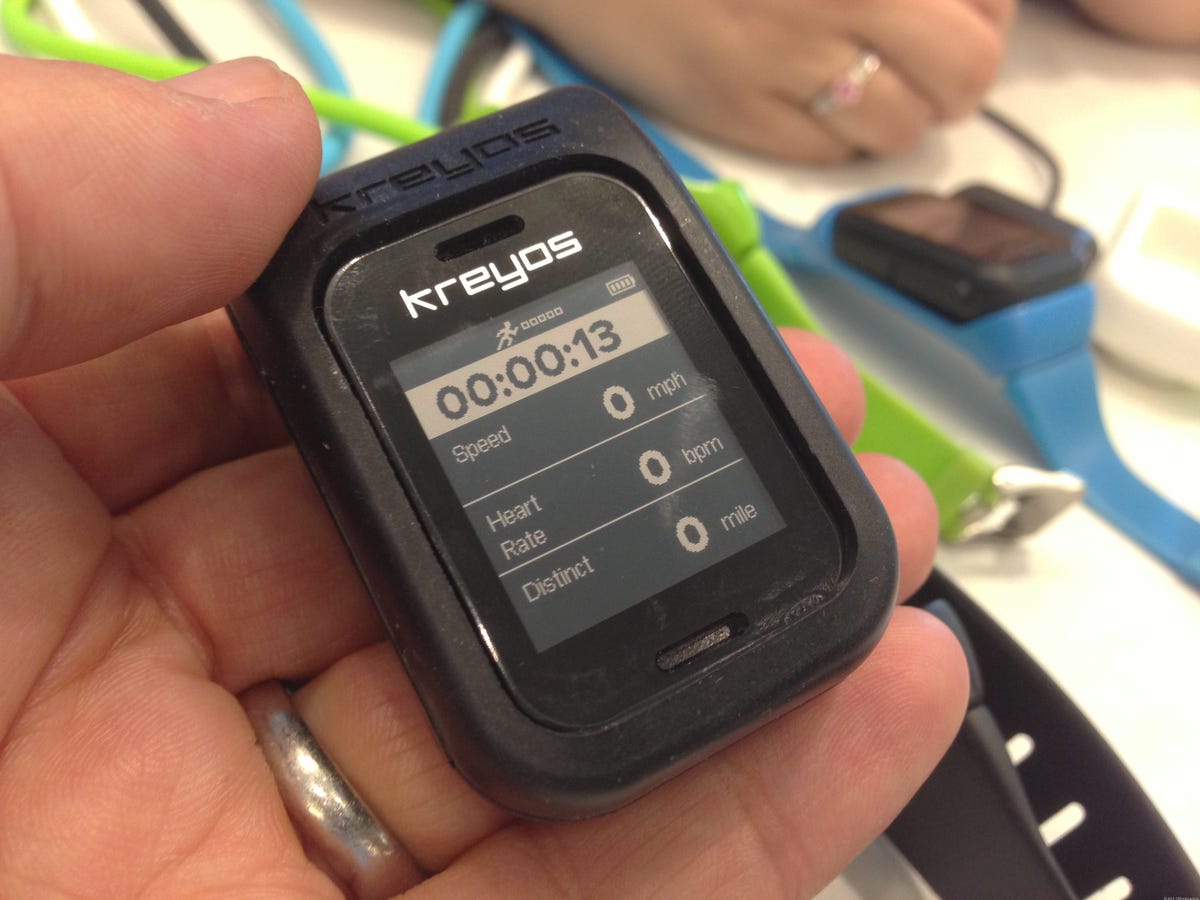Deep in a dimly lit audience in New York City, I sat watching a presenter show a slide reading, “Challenges for High Performance Wearable Solutions.”
Of all the challenges listed — battery life, processor power, connectivity, developing compelling applications — one was left out: who, exactly, wants to wear this wearable tech, and why?


Sarah Tew/CNET
“Wearable tech” is the latest hot buzz phrase, and it’s been surging in consumer electronics circles. But despite how simple the label sounds on the surface, it’s a category that’s extremely tricky to pin down.
Getting lost at the Wearable Tech conference (pictures)






Eager manufacturers parachuting on the territory hoping to cash in on a potential gold rush haven’t helped, either. Do Bluetooth headsets and heart-rate monitors really qualify as “wearable technology?” Of course they do, in a purely literal sense. An iPod Shuffle is wearable technology, too. But this newly minted category has to mean more than that. It means more in our eyes.
So where do we draw the line? And how does this messy space make sense? Some are trying to deliver simple fitness trackers. Others are trying to live in today’s version of a science fiction fantasy future, delivering us a Star Trek visor or Dick Tracy watch.
But here’s what wearable tech needs to be compelling, and eventually adopted by more people than it currently is: in other words, this is what wearable tech needs to go mainstream.
It needs to feel comfortable, all the time.
Let’s start with this question: how will people actually want to wear one? Is it on your wrist, your head, your finger? Does it fit in your shoe? All these devices are meant to be worn, and how they feel is a huge part of the equation. Nobody wants uncomfortable shoes. And no one will wear a visor headset that’s less comfortable than simply holding up your phone.
Google Glass and the Glass-alikes have a big challenge, here. I find Google Glass to be cumbersome. The Vuzix M100 Smart Glasses, in their recent form, didn’t rest easily on me, either. Bluetooth headset makers like Jawbone and Plantronics spend a fortune trying to figure out how these things will stick on your face and not feel annoying. The Pebble Watch, incidentally, is a great example of a smartwatch that feels very good on your wrist, and doesn’t get in the way.
Being water resistant, or at least sweat resistant, is a big plus…especially for fitness tech. Being able to wear it in the pool is even better — it’s something you probably can’t do with your phone. Some gadgets like the Pebble and a few pedometers are already 5 ATM water resistant, but it’s hardly a standard feature. Maybe that’s why the Wearable Tech Conference had two different waterproofing-tech companies in attendance.


Sarah Tew/CNET
It needs to be more useful, in some key way, than your smartphone.
All of these devices have an essential challenge: how do they justify their use instead of just using a smartphone? Think about it: that iPhone, or Android phone, sits in your pocket, able to do hundreds of things very, very well. It’s ready to go. It just needs one hand.
Also, it’s always with you. That’s a challenge for a Google Glass, or even a smartwatch, or even a pedometer: why aren’t you just looking at your phone? How hard can that be? Sometimes we don’t want to look at a phone. But those moments are rare…at least in my life.
The landscape of wearable tech breaks down simply: headsets transmit audio. Smartwatches are basically wearable pagers with optional health tracking and app connectivity. Google Glass and its ilk are wearable cameras with Internet-connected screens. And the fitness trackers are largely either pedometers or heart rate monitors with motivational software. The most successful subset of wearable tech right now is fitness, because these devices are the most useful and don’t cost that much.


Sarah Tew/CNET
It has to be easy to use.
A new gadget, especially a wearable one, shouldn’t be a project. It needs to feel effortless: after all, it’s the thing you’re meant to use instead of simply pulling a smartphone from your pocket. And that needs to be doubly true for a wearable tech gadget, because unlike a laptop or a phone, most people probably have no idea how to use one when they buy one.
The Pebble Watch is a classic example of the best and worst of this. It’s dead-simple as a watch, and it receives notifications easily. But to actually find and install apps feels like a project: there’s no easy-access app store, and too many experimental apps and message boards muddy the simplicity of the rest of the Pebble’s design. It still feels like a beta product, and that’s not what my mom would want to buy.


Sarah Tew/CNET
It has to be stylish enough to be fun…or functional.
The tiny, quarter-size waterproof Shine pedometer immediately caught my eye at the Wearable Tech Conference because it just looked cool. Tiny LED lights pulse to tell the time. It magnetically clips to your clothing or bag. It can snap into a wristband or a pendant. It’s waterproof. It looks like a prop from the movie “Oblivion.”
Criticizing wearable tech because it isn’t stylish sounds superficial at first, but style always matters in tech, especially when you carry it around. Style made the iPod and iPhone. Style makes phones like the HTC One appealing.
Good style can always make a clearer, more effective interface. The Shine looks just simple enough that it could be genius, as opposed to a complicated multimode pedometer display.


Sarah Tew/CNET
Now, look at the Vuzix M100. I’d have a hard time paying anyone to wear one. Google Glass fares a little better, but the closer these gadgets get to your face, the harder they’re going to have to try at being better-looking.
It has to be versatile…or cheap and simple.I get a recurring feeling when it comes to wearable tech that when most companies start with promising the world on a wrist, they end with a lot of those ideas end up never panning out at all.


Scott Stein/CNET
I’m extremely curious about the big-promise potential of the Kreyos Meteor smartwatch: it works with Android, iOS, and Windows 8 phones, has fitness tracking, can load apps, has a speakerphone, can get notifications, and can connect with ANT+ health equipment like heart rate monitors. But I’ll be happy if it just does four things excellently.
Interconnected devices are important: right now, I feel like I always have three or more devices Bluetooth-paired to my phone, and I’d love for them to cross-communicate, when appropriate. If cheap sensors are in everything, then maybe one smart device can be the hub for all of them.
Then again, maybe that hub is just your phone.
Create something great before the big dogs jump in.
Sometimes it feels like watching all the startups on Kickstarter and the like are really just warmup acts to the inevitable arrival of larger companies. The clock is ticking. Samsung, Apple, Microsoft, Google, LG, and others already have wearable on their radar.
How do these smaller companies hang on? By being simple, affordable, useful, and stylish enough to make an impression. It’s not easy, but the problem with wearable tech as it currently stands is that no one really needs it to make it through the day.
To convince people they need another device takes a lot of work. So far, outside of wearable fitness trackers, I don’t think the results are strong enough. We might need those bigger players to nail down how apps work, and online services, and maybe even new types of interconnected wireless interconnectedness. For now, the best advice for these little gadgets might be “keep it simple, and keep it cheap.”
Wearable tech is an exciting mess of a landscape, but it’s going to need to be less of a mess to get regular people to buy in.
Senior Editor Brian Bennett contributed to this post.



